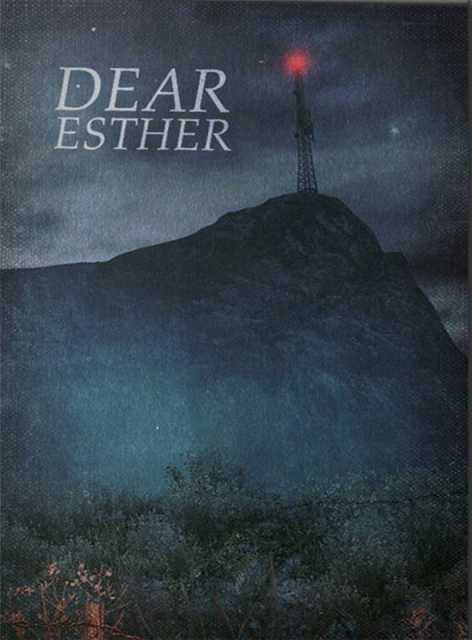Worth discussing but better left unspoiled.

Dear Esther is hard to review. Not a game, but built in a game engine. Worth discussing but better left unspoiled. But here goes.
You awake on an island with no instruction other than the narration of a letter addressed to an unknown ‘Esther’. The sea to one side, a small, run down cottage behind you and a blinking beacon in the distance, calling you towards it with no other signs of life. Given no direction of where to go other than the paths in the landscape, it’s up to you to discover where to go, how to get there, and more importantly, why you should be going there. Everything is left a mystery until discovered, and even then most of the experience is left open to interpretation.
You cannot run, pick up items, solve puzzles or fire a gun. You have a flashlight, but it’s decided for you when it turns on. By removing the traditional first person mechanics, extra detail must be paid to everything surrounding you. I often stopped moving once the narrator began to speak, pausing for a moment to unravel what he is saying and why it is being said. These clips of narration are often tied to the environment around you; a story of how something has come to be. What the narrator describes brings into question the surroundings, a brief sentence mentioning a drive down the M5 when no roads are to be seen.
Using the Portal 2 engine, Dear Esther embraces it’s slow, methodical pacing to give you every oppurtunity to take in the stunning surroundings. It’s rare to see this much attention to detail in a virtual landscape, and it holds up to the close scrutiny that Esther emplores you to use. Lighting is used carefully to set the melancholy tone of the piece, and used to effect when attention needs to be drawn. The attention to detail in sound design is similar. Look out to the sea and you’re met with a gust of the ocean breeze, birds timed to fly by and squawk after a moment of complete silence.
I really can’t say much more without getting into the story, which shouldn’t be spoiled at all. At about an hour for a complete playthrough it’s short, but packed with detail and care. Consequent playthroughs include new sets of narration but I think, for me, I only want to play it once. It’s an experience well worth the asking price on Steam, a short but un-forgettable journey through a fully realised story. The ending left me a little disappointed, not because of what happened but because of my lack of control over it. Turn off the lights, plug in the headphones and give yourself a couple of hours to play it, take it in and think about it. Dear Esther will lead to many “games as art” debates but it really shouldn’t. Dear Esther isn’t a game. It’s just art.

0 Comments